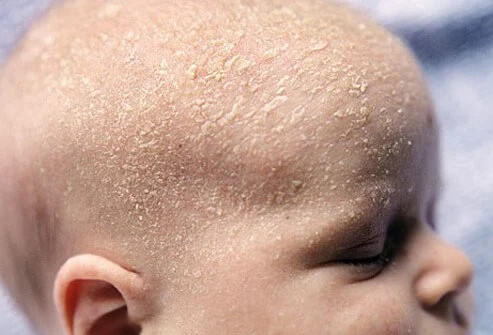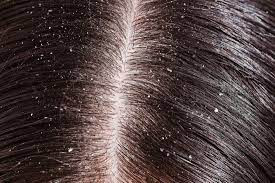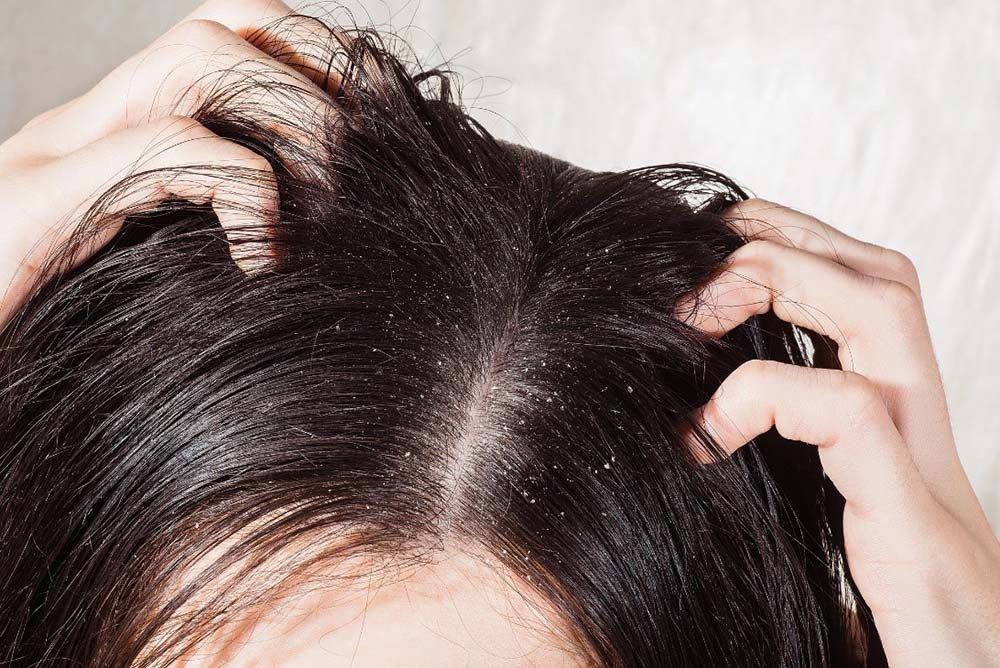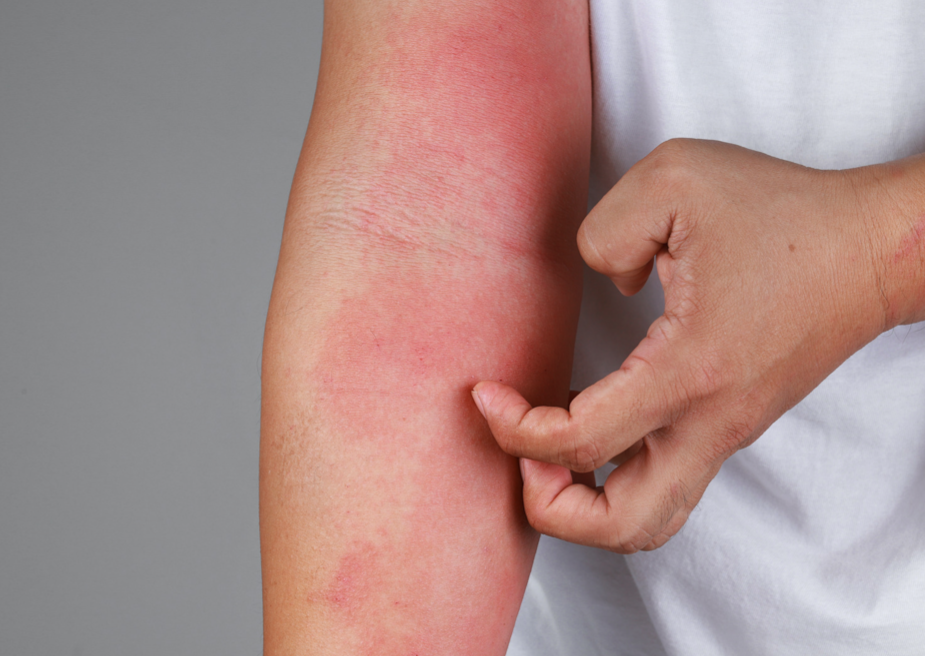Definisi
Dermatitis Seboroik merupakan masalah kulit yang sering ditemukan terutama pada kulit kepala. Dermatitis seboroik yang terjadi pada kulit kepala bayi, disebut cradle-cap Gangguan ini menyebabkan peninggian pada permukaan kulit dengan tekstur kasar (bersisik), tampak kemerahan dan menyebabkan timbulnya ketombe jika terjadi pada kulit dengan permukaan berambut.
Dermatitis seboroik juga dapat terjadi pada permukaan tubuh yang berminyak seperti wajah, area sisi hidung, permukaan kulit pada alis mata, telinga, permukaan kelopak mata dan dada. Dermatitis seboroik dapat sembuh tanpa obat-obatan khusus dan dapat timbul kembali dengan mudah khususnya apabila Anda tidak menjaga kebersihan kulit Anda. Membersihkan kulit dengan sabun dan shampo dapat membantu mengurangi kandungan minyak dan membersihkan sel-sel kulit mati.
Penyakit ini juga sering terjadi pada laki-laki daripada perempuan, terutama individu dengan kulit berminyak.
Penyebab
Penyebab dermatitis seboroik hingga saat ini masih belum diketahui secara pasti. Namun, penyakit kulit ini sering dikaitkan dengan infeksi jamur bernama Malassezia sp. Meskipun tidak berperan secara langsung, jamur ini dapat menekan aktivitas sel imun, meningkatkan produksi minyak (sebum) sehingga memicu terjadinya dermatitis seboroik. Selain itu, diketahui bahwa orang-orang dengan dermatitis seboroik memiliki gangguan pada barrier kulit. Terdapat beberapa jenis obat-obatan yang diketahui dapat memicu terjadinya dermatitis seboroik.
Faktor Risiko
Meskipun penyebab pastinya belum diketahui, faktor risiko yang dapat memicu terjadinya dermatitis seboroik dapat dihindari untuk mencegah terjadinya dermatitis seboroik. Beberapa diantaranya berupa stres dan faktor genetik.
Diketahui bahwa terdapat jamur yang secara normal berada pada permukaan kulit manusia. Namun, pada kondisi tertentu pertumbuhan jamur menjadi tidak terkendali dan menyebabkan terjadinya infeksi pada permukaan kulit. Beberapa kondisi medis yang menyebabkan penurunan fungsi imunitas dan konsumsi obat-obatan tertentu. Beberapa kondisi yang menganggu sistem imunitas berupa infeksi HIV/AIDS, orang dengan kebiasaan mengonsumsi alkohol dan orang dengan depresi. Kondisi ini juga dapat menjadi salah satu faktor risiko terjadinya dermatitis seboroik.
Sistem imun yang rendah juga dapat terjadi disebabkan karena usia. Pada bayi yang sistem imunnya belum terbentuk dengan sempurna serta pada lansia yang berusia lebih dari 60 tahun diketahui memiliki kerentanan untuk mengalami dermatitis seboroik.
Kelembaban udara di sekitar Anda, berupa kelembaban udara yang rendah dan udara yang panas dapat menyebabkan kulit Anda menjadi kering dan mudah terpapar infeksi. Selain itu, sistem imun yang terganggu juga dapat memicu terjadinya dermatitis seboroik.
Gejala
Pada bayi berusia 3 bulan atau pada bayi berusia lebih muda, umumnya menimbulkan gejala berupa kulit kepala tampak permukaan berwarna kekuningan atau kecoklatan yang dapat hilang sebelum anak berusia satu tahun. Meskipun demikian, gangguan kulit tersebut dapat muncul kembali setelah anak-anak tersebut dewasa.
Pada lansia, umumnya cukup sulit untuk membedakan antara dermatitis seboroik dengan ruam popok.
Pada orang dewasa, sering terjadi dermatitis seboroik yang menyerang wajah, terutama pada area di sekitar hidung, pada permukaan kulit alis mata atau pada permukaan kelopak mata dan pada area kulit belakang telinga. Lebih lanjut, dermatitis seboroik juga dapat terjadi pada berbagai bagian tubuh, seperti pada dada, di sekitar pusar, pada permukaan kulit pantat, pada lipatan kulit lengan, kaki dan lipat paha, dan pada lipatan payudara. Permukaan kulit yang mengalami dermatitis seboroik terasa perih, gatal atau seperti sensasi terbakar. Pada permukaan kulit yang bersisik dan mengelupas dapat berwarna putih kekuningan serta tampak lembab atau berminyak. Selain itu, kulit kepala yang mengalami dermatitis seboroik dapat menebal dan lesi yang luas pada kulit kepala dapat menyelimuti seluruh kulit kepala sehingga menyebabkan penderitanya kurang percaya diri.
Diagnosis
Diagnosis dermatitis seboroik dilakukan oleh dokter Anda dengan melihat lesi pada kulit. Selain itu, dokter Anda juga akan menanyakan tentang riwayat pengobatan Anda. Dokter akan mengambil sedikit sampel kulit Anda dan melihatnya di bawah mikroskop. Biopsi kulit menjadi pemeriksaan yang penting untuk membedakan dermatitis seboroik dengan penyakit lainnya, seperti penyakit infeksi jamur pada kepala atau tinea kapitis.
Tata Laksana
Dermatitis seboroik biasanya dapat sembuh dan bersih dengan sendirinya. Namun, tak jarang penyakit ini dapat bertahan cukup lama dan mengganggu tampilan kulit Anda sehingga menyebabkan rasa tidak nyaman. Jika Anda mengalami dermatitis seboroik, dokter Anda akan merekomendasikan Anda untuk mengganti shampoo Anda dengan shampo lain yang memiliki kandungan tertentu, seperti ketokonazol, asam salisilat, selenium sulfida, dan zinc.
Jika anak Anda mengalami kulit kepala bersisik, gunakan shampo bayi dan usap kulit kepala bayi Anda dengan air hangat ketika mandi. Jangan gunakan shampo ketombe atau shampo dewasa karena dapat menyebabkan iritasi pada kulit kepala bayi Anda. Jika Anda mengalami dermatitis seboroik pada wajah dan tubuh Anda, pastikan area kulit tersebut bersih, bersihkan dengan sabun dan air dengan rutin setiap hari. Sinar matahari dapat membantu untuk menghentikan pertumbuhan organisme jamur pada permukaan kulit Anda sehingga disarankan bagi Anda untuk berjemur dan pastikan Anda menggunakan krim tabir surya untuk menghindari terjadinya luka bakar pada kulit Anda.
Dokter Anda juga akan memberikan resep salep kortikosteroid untuk mengurangi peradangan pada kulit Anda. Selain itu obat-obatan atau salep anti-jamur juga akan diberikan apabila diketahui Anda sedang mengalami infeksi jamur pada kulit Anda. Pada kasus yang parah, dokter Anda akan memberikan terapi dengan obat flukonazol untuk membantu meredakan gejala yang timbul pada kulit Anda.
Komplikasi
Kasus dermatitis seboroik yang tidak segera ditangani dan dibiarkan dalam waktu yang lama akan menyebabkan beberapa komplikasi pada kulit dan menurunkan rasa percaya diri Anda. Selain itu, apabila Anda menggaruk lesi pada kulit Anda, hal ini tentunya dapat memicu terjadinya infeksi.
Pencegahan
Tindakan pencegahan utama yang dapat Anda lakukan untuk menghindari terjadinya dermatitis seboroik pada kulit Anda dengan cara menjaga kebersihan kulit Anda. Kebersihan kulit menjadi penting karena hal tersebut dapat menjaga agar permukaan kulit Anda tetap terjaga dari berbagai mikroorganisme yang dapat menyebabkan iritasi atau infeksi. Selain itu, penting untuk menjaga kelembaban kulit Anda. Sebaiknya Anda menggunakan losion atau pelembab yang dapat menjaga agar kulit Anda tidak kering. Jika Anda memiliki alergi, hindari allergen atau pemicu terjadinya alergi agar tidak menyebabkan iritasi pada kulit Anda. Komunikasikan pada dokter Anda jika Anda sedang dalam pengobatan karena kondisi medis tertentu dan mengalami gangguan pada kulit Anda yang mengarah pada dugaan dermatitis seboroik.
Kapan Harus ke Dokter?
Segera datang untuk memeriksakan diri Anda ke dokter apabila Anda mengalami sensasi tidak nyaman pada kulit Anda hingga mengganggu aktivitas sehari-hari dan mengganggu tampilan kulit Anda yang membuat Anda menjadi tidak percaya diri. Sebaiknya katakan pada dokter Anda apabila Anda memiliki kondisi medis tertentu seperti alergi atau mengkonsumsi obat-obatan tertentu agar membantu dokter untuk menganalisa masalah yang sedang Anda alami dan dokter dapat memberikan terapi yang sesuai dengan kondisi Anda.
Mau tahu informasi seputar penyakit lainnya, cek di sini ya!
- dr Anita Larasati Priyono
(Medscape, 2020) Seborrheic Dermatitis, diakses pada19 Maret 2022 dari Seborrheic Dermatitis: Practice Essentials, Background, Pathophysiology (medscape.com)
(Mayoclinic, 2020) Seborrheic Dermatitis, diakses pada 19 Maret 2022 dari Seborrheic dermatitis - Diagnosis and treatment - Mayo Clinic
(WebMD, 2021) Seborrheic Dermatitis, diakses pada 19 Maret 2022 dari Seborrheic Dermatitis: Causes, Symptoms, Risk Factors, Diagnosis, and Treatments (webmd.com)











